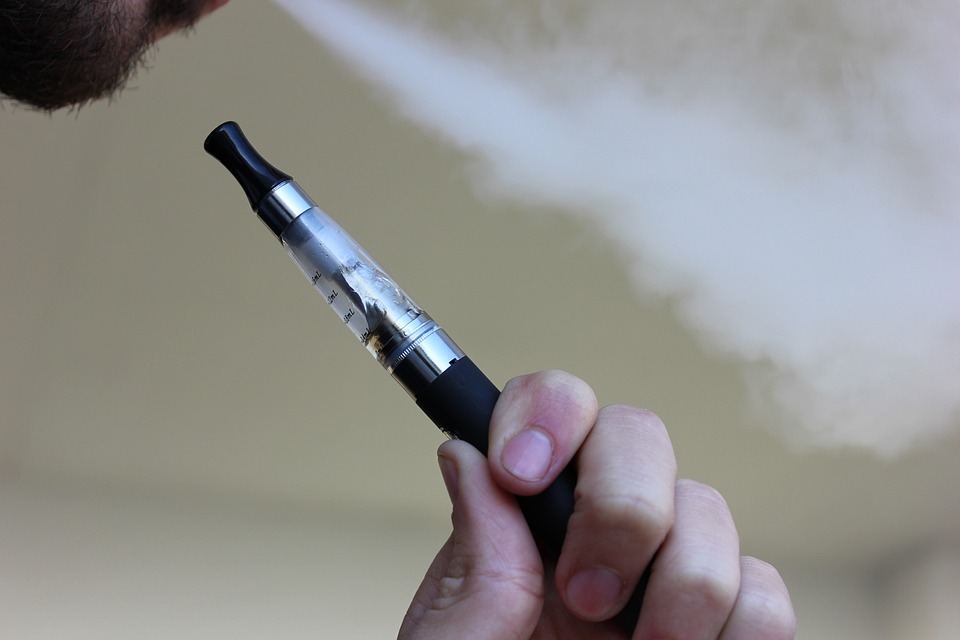ENDS to Vaping
September 24, 2019 | Expert Insights

Background
Efforts to create an e-cigarette or nicotine vaporiser started in the early 1930’s, and a commercially successful variant was created in Beijing, by Hon Lik, in the year 2003. After its introduction in the US and Europe between 2006-2008, e-cigarettes have been gaining popularity internationally. Previously touted as a safe alternative to smoking cigarettes, this claim is now being called into question with around 450 cases of serious lung infections and six deaths recently reported in the US.
Analysis
E-cigarettes had come under government scanner leading due to ill effects reported in the US, which ultimately led to it being banned. The question now being asked is how it will impact the tobacco industry.
The alarm bells on the apparent ill effects of vaping began ringing first in the US a few months ago. The steady increase in cases of lung infections and some fatalities, compelled US regulators to take notice. Panicked patients (and their parents) flocked into hospitals complaining of cough, chest pain, shortness of breath, fatigue and vomiting. The diagnostic analysis found that around 60% of the patients had used nicotine products with a majority out of them also adding Tetra hydro cannabinol (THC), the psychoactive chemical in marijuana. In some cases, the diagnosis was lipoid pneumonia which occurs when oil or fat-containing substances enter the lungs and provokes inflammation. However, the specific reason for the lung infection outbreak could not be pinpointed.
The New York State Department of Health has disclosed that high levels of Vitamin E acetate has been found in vape products containing cannabis. Medical research has in the past come to the conclusion that when inhaled, Vitamin E acetate can be toxic. However, the evidence pointing to Vitamin E acetate as the culprit in the instant case is minimal as medical reports indicate that even those who did not use THC products in their Vapes, ended up with the same symptoms.
As a precautionary step, the FDA issued an advisory “Because consumers cannot be sure whether any THC vaping products may contain vitamin E acetate, consumers are urged to avoid buying vaping products on the street and refrain from using THC oil or modifying/adding any substance to products purchased in stores.”
The ENDS market had seen a sustained ad campaign to sell the product to consumers, especially minors who form a majority of users. Studies that projected vaping as 95% more safer than conventional cigarettes received wide publicity. They substantiated their claim with the fact that vaping rules out tar and other harmful chemicals generated by burning tobacco. Marketing campaigns also touted them as a “Cessation Device” which would help to wean smokers (who were trying to quit) from their nicotine dependence in a gradual manner. However, anti-smoking lobbies have discounted these claims because ENDS are essentially nicotine delivery systems and are equally addictive and harmful.
The ENDS market has grown rapidly as the profit margins are incredibly high. Annual e-cigarette retail sales in the US market increased 16% between 2015 and 2016 and then jumped an astonishing 47% the next year.
ENDS are advertised to the millennials as an “in thing” and its “electronic connection” perhaps endears it more to the younger generation. Ads on vaping products dominate social media which provides a wider exposure to the younger target population.
A panel led by the finance minister, which included ministers from commerce, health, agriculture, chemicals and petrochemicals and food processing departments studied the health ministry’s proposal to ban e-cigarettes and got approval for an ordinance. Now the Cabinet has approved the ordinance which ensures a sweeping ban on e-cigarettes, making production, import, export sale and advertisement punishable offences with jail terms ranging from one to three years and fines of Rs. 1 to 5 lakhs. The ban also covers hookah bars.
However, this action is without prejudice to the thriving tobacco industry. Independent studies have shown that the tobacco industry contributes a whopping Rs 11,79,498 crore to the Indian economy and employs around 4.57 crore people.
Assessment
- The government action in banning was prompt and needs to be commended considering the fact that ENDS are gaining popularity amongst the youth in India, although due to their high cost, they have yet to find universal appeal as in the case of tobacco products.
- Although they have been marketed as an aid to help people quit smoking, e-cigarettes have not received any government approval as smoking cessation devices. Addicts who are likely to use them as a transitional device while trying to kick their nicotine addiction, end up getting hooked to e-cigarettes and nicotine.
- The government has to ensure that following the ban, strict action is taken to prevent a back-door entry through the black market as is the case with a plethora of other banned substances.
- This ban on ENDS does not precede a total ban on all tobacco products. Tobacco products continue to sell profitably in India despite hefty duties and a ban on their advertisements. The economic burden of banning them, sustains this death-dealing industry.
Image Courtesy: pixabay








Comments